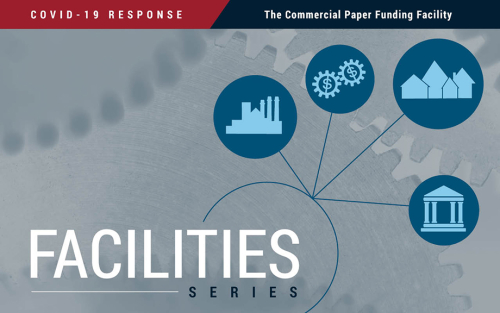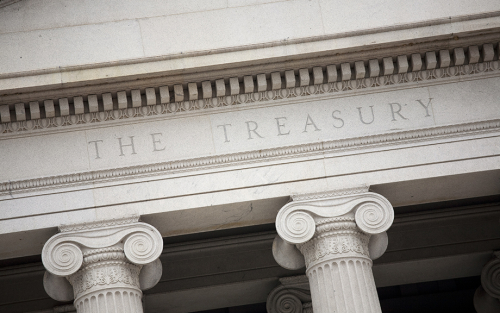The New York Fed DSGE Model Perspective on the Lagged Effect of Monetary Policy

This post uses the New York Fed DSGE model to ask the question: What would have happened to interest rates, output, and inflation had the Federal Reserve been following an average inflation targeting (AIT)-type reaction function since 2021:Q2, when inflation began to rise—as opposed to keeping the federal funds rate at the zero lower bound (ZLB) until March 2022, and then raising it aggressively thereafter? We show that actual policy was more accommodative in 2021 than implied by the AIT reaction function and then more contractionary in 2022 and beyond. On net, the lagged effect of monetary policy on the level of GDP, when measured relative to the counterfactual, has been positive throughout the forecast horizon, due to the initial boost associated with keeping the fed funds rate near zero in 2021.
How Could Oil Price and Policy Rate Hikes Affect the Near‑Term Inflation Outlook?

Since the start of the year, oil prices have risen sharply owing to worsening expectations regarding global oil supply. We’ve also had an acceleration of inflation in the United States and the euro area, as well as a sharp steepening of the expected paths of policy rates in both economies. These factors, combined with the potential for a slowdown in growth, have made the inflation outlook quite uncertain. In this post, we combine the demand and supply oil price decomposition from the New York Fed’s Oil Price Dynamics Report with yield curve data to quantify the likely path of inflation in the United States and the euro area over the next twelve months. Based on our analysis, we anticipate that inflation will likely remain elevated through the second quarter of 2023, despite payback for the inflationary impact of current negative oil supply shocks during the second half of 2022 and the disinflationary effects of tighter monetary policy.
At the New York Fed: Sixth Annual Conference on the U.S. Treasury Market
On September 29, 2020, the New York Fed hosted the sixth annual Conference on the U.S. Treasury Market. The one-day event, held virtually this year, was co-sponsored by the U.S. Department of the Treasury, the Federal Reserve Board, the U.S. Securities and Exchange Commission (SEC), and the U.S. Commodity Futures Trading Commission (CFTC). The agenda featured a number of panels and speeches on the effects of the COVID-19 pandemic on the Treasury market in March 2020, the ensuing policy response, and ways that market resiliency could be improved in light of the vulnerabilities revealed. Two speeches also touched on the ongoing transition from LIBOR to alternative reference rates.
The Commercial Paper Funding Facility

This post documents dislocations in the commercial paper market following the COVID-19 outbreak that motivated the Fed to create the Commercial Paper Funding Facility, and tracks the subsequent improvement in market conditions.
At the New York Fed: Fifth Annual Conference on the U.S. Treasury Market

The New York Fed recently co-sponsored the fifth annual Conference on the U.S. Treasury Market with the U.S. Department of the Treasury, the Federal Reserve Board, the U.S. Securities and Exchange Commission, and the U.S. Commodity Futures Trading Commission. This year’s agenda covered a variety of topics, including issues related to LIBOR transition, data transparency and reporting requirements, and market structure and risk.
Is There Stigma to Discount Window Borrowing?
The Federal Reserve employs the discount window (DW) to provide funding to fundamentally solvent but illiquid banks (see the March 30 post “Why Do Central Banks Have Discount Windows?”). Historically, however, there has been a low level of DW use by banks, even when they are faced with severe liquidity shortages, raising the possibility of a stigma attached to DW borrowing. If DW stigma exists, it is likely to inhibit the Fed’s ability to act as lender of last resort and prod banks to turn to more expensive sources of financing when they can least afford it. In this post, we provide evidence that during the recent financial crisis banks were willing to pay higher interest rates in order to avoid going to the DW, a pattern of behavior consistent with stigma.














 RSS Feed
RSS Feed Follow Liberty Street Economics
Follow Liberty Street Economics